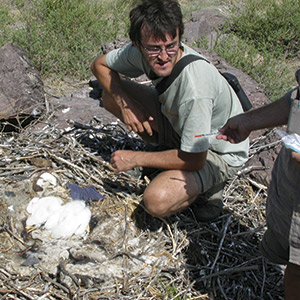CONTRIBUTION
Based at Doñana Biological Station (Spanish National Research Council), the group was founded in the 1980s to develop knowledge and a solid scientific base regarding the vast diversity of Spanish bird species and their habitats, and to form a pool of experts able to carry forward these investigative labours. Its brief, therefore, is to generate quality scientific information directly applicable to Biodiversity Conservation, while making the results accessible to policy makers and the public at large. The groups work has led to Management and Conservation Plans being set up for numerous endangered species under the Ministry of Environment and the Conservation Departments of various Spanish regions.
The group’s research activity has focused on endangered bird species and their ecosystems, initially in the Mediterranean and the Iberian Peninsula, although their scientific work has embraced other ecosystems in such contrasting climes as the Patagonian deserts of Argentina, the coastal deserts of Baja California, the continental steppes of Kazakhstan or the sub-Saharan plains of Mauritania.
Endangered raptor species have been an ever present concern. Topics under investigation have included the impact of power lines on raptor populations, the poisoning of scavenging birds, the effects of agricultural policies on steppe-land birds, the genetic consequences of population decline and fragmentation, the problems generated by biological invasions, the interactions between sea birds and the fishing industry or, more recently, the impact of the Aznalcóllar mine spill on bird colonies in and around Doñana National Park.
The species studied include some of the most imperilled in Europe. Among them, the lammergeier and the Spanish imperial eagle, which was proposed as a species new to science by group leader F. Hiraldo in the mid 1970s. The group’s methods and techniques have consistently marked the state of the art, and have delivered tangible advances in dispersal theory, the genetics of small populations and the limiting factors for endangered raptor populations.

